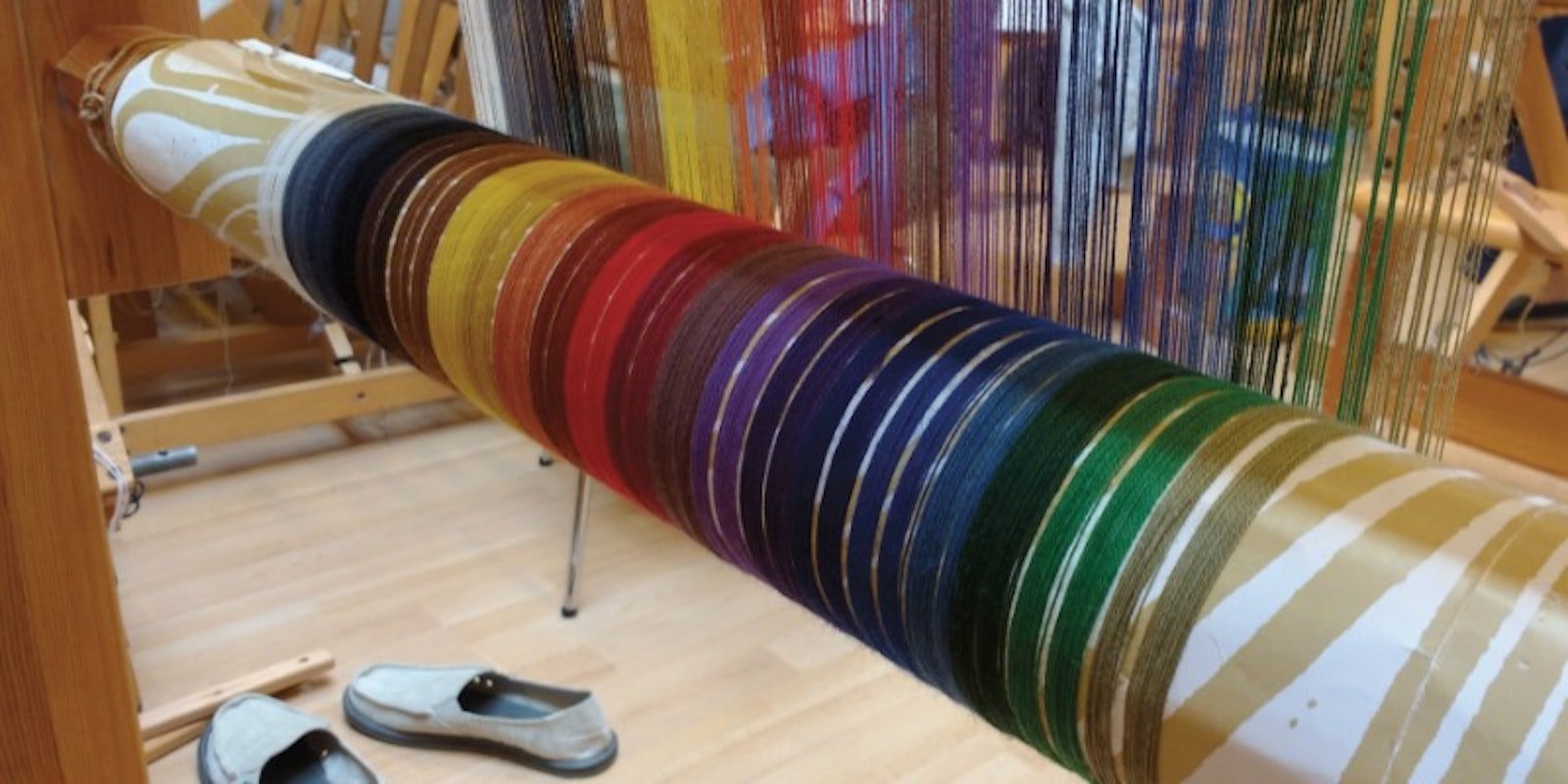Gina Hedegaard Nielson knows a thing or two about Nordic weaving. Not only is she professional weaver in her native Denmark, she’s also the editor of a Danish textile magazine. In her article from the March/April 2017 issue of Handwoven, Gina gives her perspective on Scandinavian weaving. ~Christina
NORDIC WEAVING IN THE 20TH CENTURY
In Denmark at the turn of the 20th century, men wove everyday textiles in the villages, but when industrialization began, the male weavers were attracted to commercial mills and sewing sheds. At the same time, women were rained as tapestry weavers to produce designs by recognized artists using Nordic tapestry techniques that were also common in Norway and Sweden.
During World War II, Denmark had a resurgence of production handweaving for everyday textiles, now with women at the looms. During the war, professional weaving workshops weren’t able to import yarn of sufficient quality to produce durable everyday textiles. So in 1946, they founded Væverlauget (Weavers’ Guild) to be able to import enough quality yarn to supply all the workshops. After just one year, the weaving workshops didn’t have enough workers to meet the increasing demand for handwoven textiles, so Væverlauget established a weaving school that still exists. Today it offers 3- to 4-year training programs with evening and weekend classes for serious enthusiasts seeking an artisanal knowledge of textiles.
In the 1960s, it became popular to train as a textile artist at Kunsthåndværkerskolen, The Arts and Crafts School, Denmark’s stronghold of industrial design education. Until the mid-1980s, the school’s curriculum was inspired by the textile avant-garde, whose work could be experienced at the biennals in Lausanne and other international textile exhibitions. InDenmark, it became trendy, especially at Kunsthåndværkerskolen, to experiment freely in textile art by investigating the possibilities of the material. However, a larger group of artists, such Lis Ahlmann, Vibeke Klint, and Hanne Vedel, maintained the classical weaving tradition, often in cooperation with furniture designers, and they have produced leading textile designs from the 1960s to the present.
Gina at her loom.
NORDIC WEAVING TODAY
Today, weaving in Denmark is a rather mixed business. The most acknowledged School of Design, part of the Royal Danish Academy of Fine Arts, has just decided to discontinue weaving and printing workshops as of summer 2017. The teachers of these practical subjects have been laid off, as future curriculum focuses primarily on garment design.
But I am pleased to report that the craft of weaving is still going strong in smaller organizations all over the country. Weavers meet for workshops and lectures, and to work on their own or on common looms, producing all kinds of textiles from clothing to furniture fabrics.
—Gina Hedegaard Nielsen


